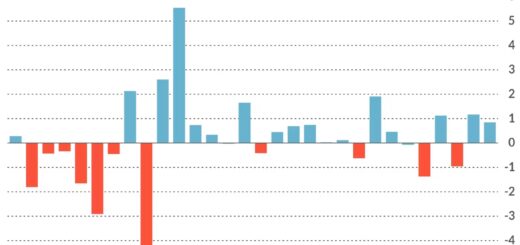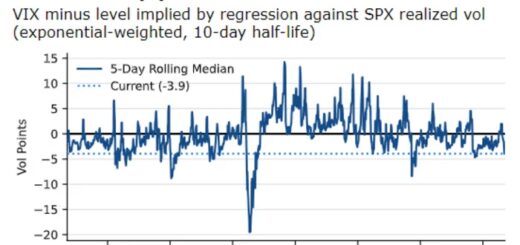Stock Investors’ Wall of Worry: A Surprising Catalyst for the Emergence of a New Bull Market
The most recent data regarding money movement within mutual funds indicates a positive stock trend. However, it harms bonds.
By only considering the information provided, your resulting conclusion would differ. According to EPFR-TrimTabs, American equity funds (both open-end and exchange-traded) have experienced a total net outflow of $86.5 billion in the current year. Conversely, U.S. bond funds have gained a total of $169.9 billion in investments.
When analyzing fund flows, it is essential to take a contrarian approach. This idea is demonstrated in the provided chart, which shows that despite the stock market‘s positive performance from 2016 to 2020, U.S. equity funds had net outflows every year during this period. Nonetheless, things changed in 2021 when there was a switch to inflows, which came just in time for the 2022 bear market.

Bond funds showed some behavior that went against the norm. They experienced significant amounts of money coming in during 2021, which was the highest in quite some time. Nonetheless, during 2022, they faced a significant decrease in the market, which was one of the worst in a long time or even ever before.
The relationship between the performance of a fund and the movement of money in or out of it is not always clear-cut. Sometimes the connection is immediate, while other times it takes longer to become apparent. Thus, using monetary data to predict market timing over a long period may not be straightforward. However, as a general rule, when a large amount of money flows into a fund, the returns are usually average or even negative, while significant outflows often lead to decent returns, if not better than expected.
Scholars have analyzed the relationship between exchange-traded funds (ETFs) and fund flow. In a study published in the Review of Finance two years ago, it was found that ETFs that experience substantial outflows usually perform better than ETFs with large inflows for up to a year after these notable fund movements.
In an interview, Matthew Ringgenberg, a finance professor at the University of Utah and co-author of the research, explained the likely sequence of events that led to inadequate performance. He suggested that when ETFs become saturated with investors, particularly those in retail, the price exceeds the net asset value of its underlying stocks. To rectify this, certain market facilitators called authorized participants to create new ETF shares and eliminate the excess value.
During the previous summer, a report was published in the Review of Financial Studies that found an explanation for poor performance; it could be due to investors being too excited about the most popular funds and ETFs. The report showed that ETFs that are created to cater to specific investor trends often receive a substantial amount of investment shortly after their launch but underperform compared to the market’s risk-adjusted returns by 5% yearly over five years after launch.
In recent times, investors have shown a keen interest in artificial intelligence, which is evident from a recent trend. A study published in Finance Research Letters indicates that there was better stock performance when the ETF featured the acronym “AI.” This trend is similar to the internet bubble in the late 1990s, where adding “dot com” to a company’s name improved its stock performance.
This research reveals a crucial concept that contradicts common perceptions, which Warren Buffett expressed as “being careful when others are being reckless, and being reckless when others are being careful.” Recent information on investment funds suggests that most people investing in the stock market are currently being more careful than adventurous. This is evident because, even though the S&P 500 has grown by an impressive 15% in 2023, investors have generally taken their money from U.S. equity funds.
Taking a broad perspective, this is particularly good news. If regular investors had eagerly participated in the positive trend, those who are opposed to it would have more reason to worry about the sustainability of this new upward trend in the stock market. Nonetheless, the fact that they haven’t done so implies that there is a substantial amount of prudent hopefulness supporting this optimistic market.




